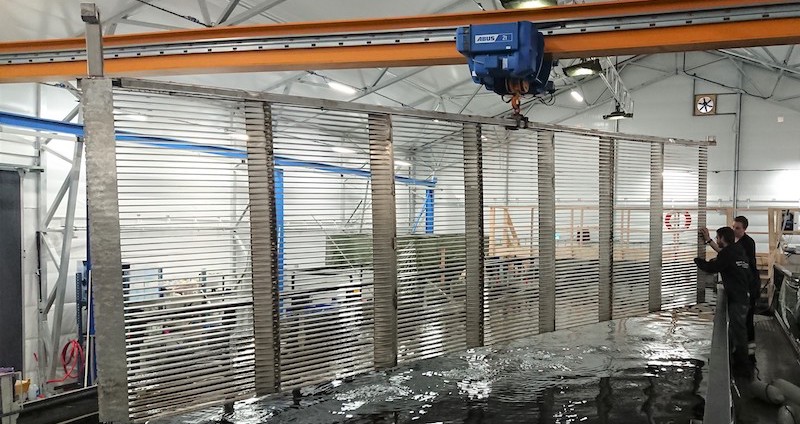Downstream migratory species, such as Atlantic Salmon and European eel, typically pass hydroelectric power plants, HEPs, through its turbines, spillways or fishways. These passages are usually associated with increased risk of injury and mortality, often turbine induced or caused by increased predation adjacent to the HEPs. This study presents the first results regarding diversion functionality on Atlantic salmon smolt for low-sloping racks in a laboratory environment.
Efficient Diversion
The study, performed by researchers at Karlstad University, presents results from tests performed with low-sloping racks with two different bar spacings. For the tested racks both spacings resulted in divertion of 73 percent of migrating salmon smolt to an adjacent safe passage.
In addition, previous studies have shown that not only do the racks function as a physical barrier, it may also induce behavioural guidance. Meaning that smolts that physically could pass through the racks do not always do so.
- The results are very positive and show that the effect is not dependent on bar spacing. Bars with 30 millimetres spacing function just as well as those with 15 millimetres spacing, which is good as they are better from a maintenance and production perspective, says Birgitta Adell, Fortum, chairperson for the Environmental Program for Hydropower.
Maintenance of Low-Sloping Racks
Hydraulic measurements and debris tests were conducted for both types of racks in which three different types of debris, beech leaves, pinecones and plastic bags, were tested to examine the self-cleaning ability of the racks. Due to larger spacing, caught debris was lower for the 30-millimetre spacing of bars.
These results show promise for continued testing of using low-sloping racks to decrease the risk of salmon smolt injury and mortality.
The full report is available in Swedish, Låglutande galler och betydelsen av spaltvidd för laxmoltspassage.
For more information see also the master's thesis, Låglutande galler och betydelsen av spaltvidd för passageeffektivitet och beteende hos nedströmsvandrande Europeisk ål.
If you have any questions regarding this study you are welcome to contact
Olle Calles, Karlstad Universitet: olle.calles@kau.se tel 070 – 177 11 44
David Aldven, Vattenfall R&D: david.aldven@vattenfall.com tel 070 – 376 28 59
